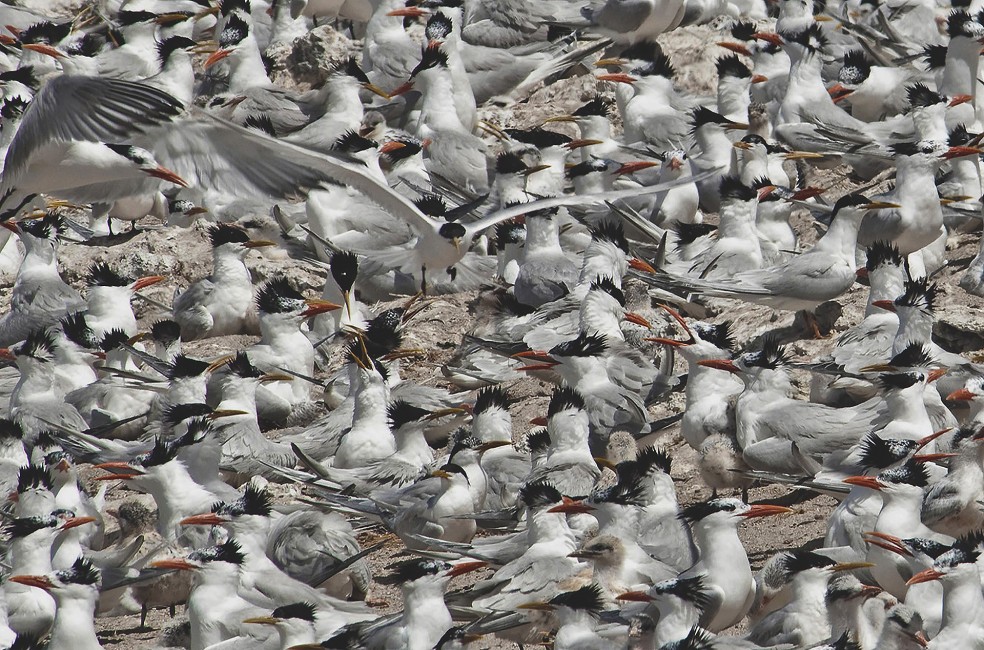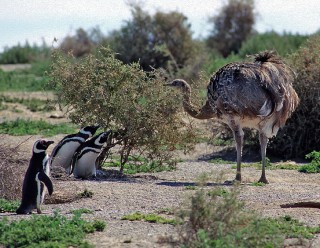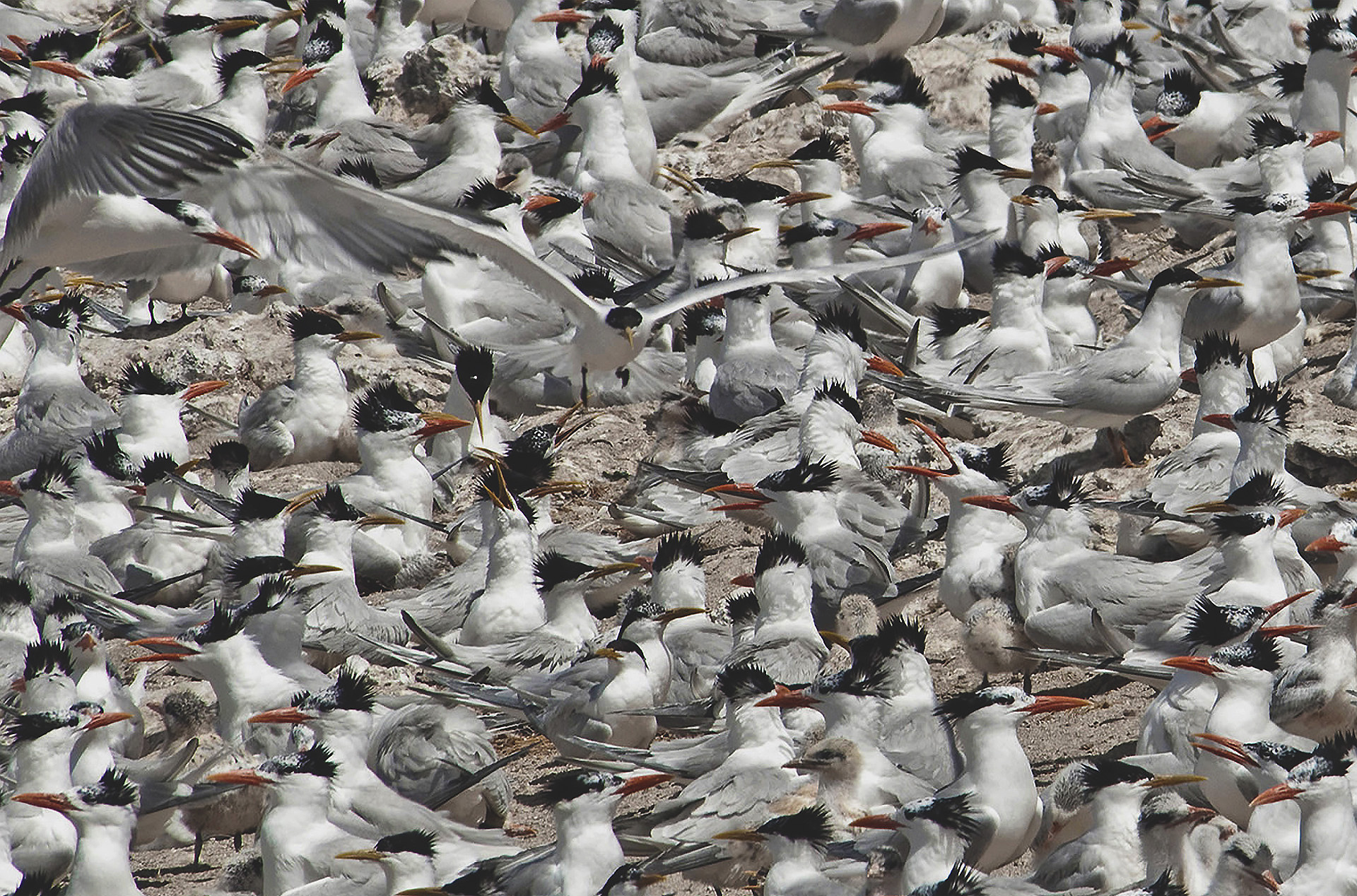
July 11, 2016
Terns at Tombo
- as seen by -
 William G. Conway
William G. Conway
Bustling, teeming colonies of terns, among the most beautiful of aquatic birds, hundreds—quarreling, courting, feeding chicks, and cursing gulls.
In three hours of zigzag hiking, the Wildlife Conservation Society’s Argentine scientist Guillermo Harris and I had worked our way past the world’s largest colony of Magellanic penguins at Punta Tombo, a rock and sand peninsula protruding four miles into the Atlantic ocean from the Argentine coast, and discovered royal terns (Thalasseus maximus) and sandwich terns (T. sandvicensis) sharing colonies near Tombo’s tip. (Birds with red beaks –royal tern; those with yellow beaks – sandwich terns.)
Terns are unpredictable. Flocks suddenly appear, make minimal nests, incubate eggs, and rear chicks. Chicks gather in a dense nursery called a crèche and roam the colony together while still fed by their parents. As ground nesters, terns are highly vulnerable to predators and threaten trespassers with shrill screams and bombs of white poo. Although beyond the poo line, I obtained a new badge on my hat, and one on my left ear. I kept only the one on my hat.
EDITOR’S NOTE: The Wildlife Conservation Society played a major role in gaining protected status for Punta Tombo in 1979 and has maintained ongoing conservation research and presence there ever since. In 2015, Punta Tombo was declared a Biosphere Reserve by the United Nations Educational Scientific and Cultural Organization (UNESCO) together with the recently created Golfo San Jorge marine park.
Nikon D300s, Nikkor 80-400 Lens




Leave a Comment
Barbie
August 12, 2016 at 1:29 pm
Mr. Conway, I found this site by watching reruns today of To Tell the Truth. I’ve always been interested in animal conservation, and looking up your name today after seeing the show, I find a wealth of information on wildlife and their preservation.
Thank you for sharing pictures of these terns. Now that Im aware of this site, I look forward to seeing more pictures. Thank you,
Barbie